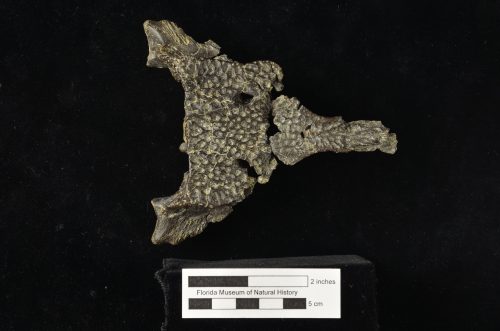
For the first Fossil Friday of 2015, we are going to look at the crocodylian Centenariosuchus gilmorei. This specimen was found at the Hodges Microsite at the Hodges Hill locality of the Panama Canal Zone. It is from the Cucaracha Formation and is early to middle Miocene in age. This species belongs to the crocodylian family Alligatoridae, which includes alligators and caimans, and according to phylogenetic analysis, it falls within the caiman subfamily (Caimaninae). Caimans, like alligators, have a low salinity tolerance, preventing them from living in marine habitats. However, the presence of this fossil crocodylian with South American affinities in Panama before the connection of North and South America suggests that there might have been a marine dispersal of caimans.
To learn more about this specimen and the implications of its discovery, read the publication about it here.